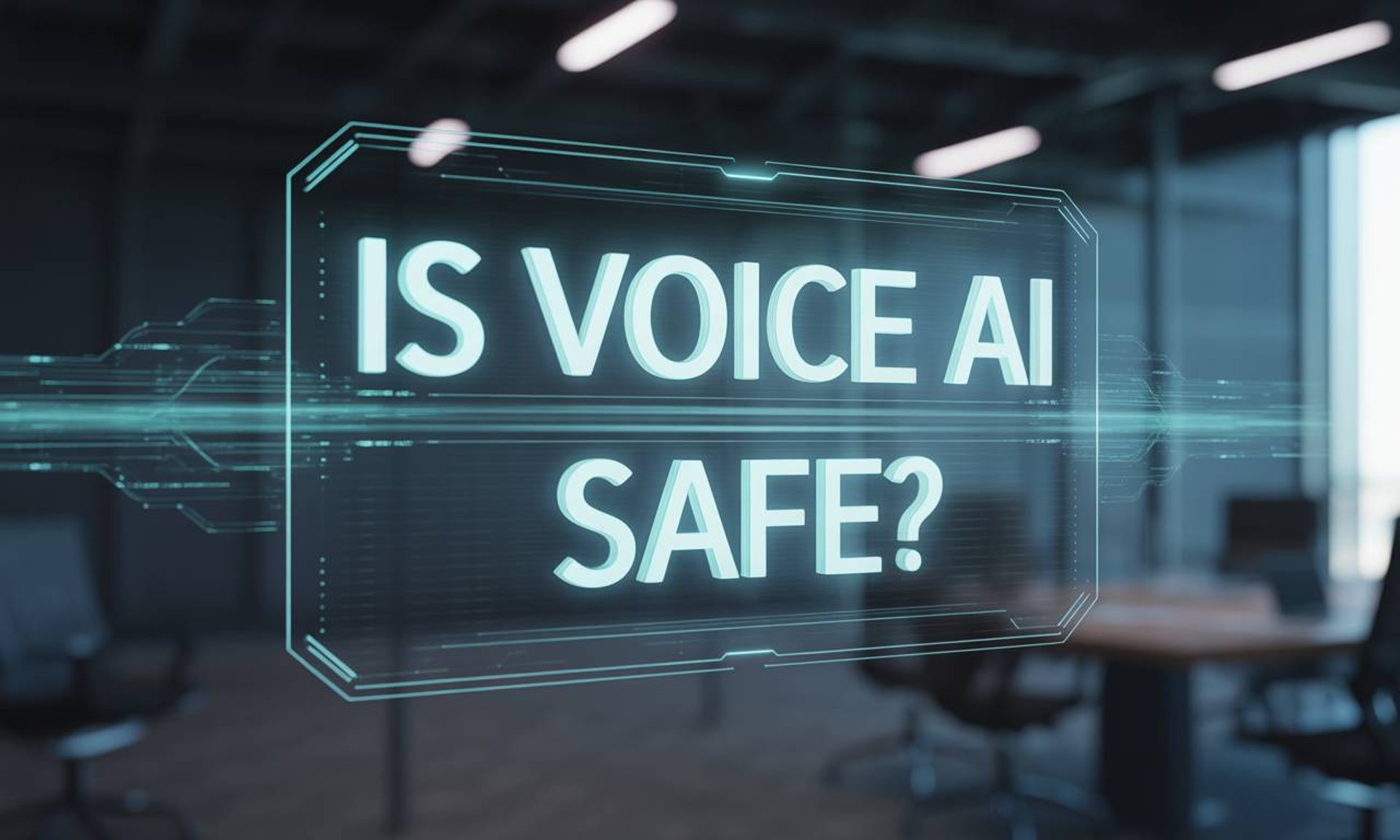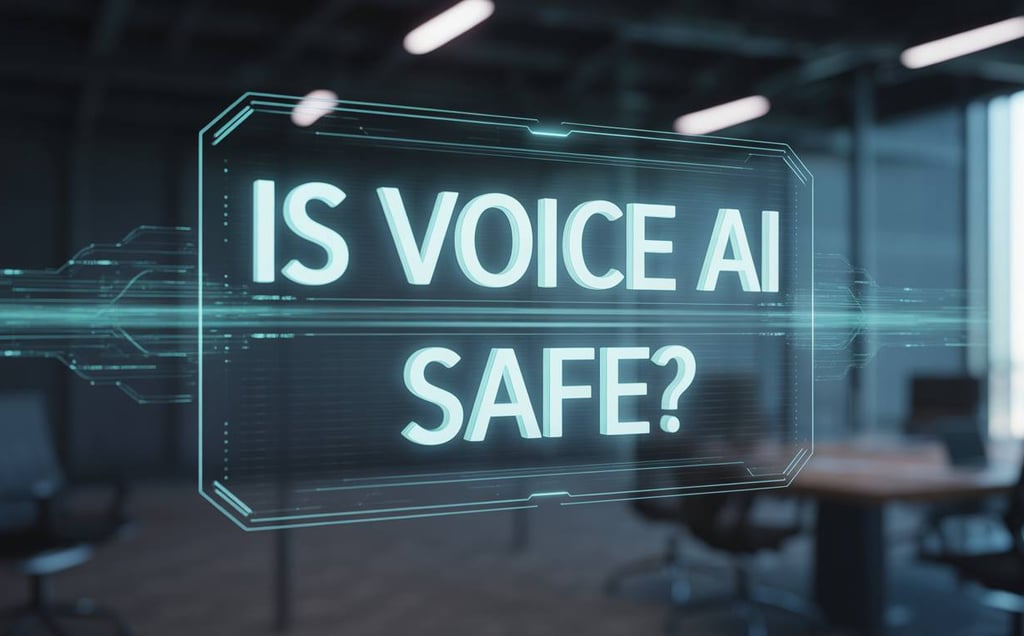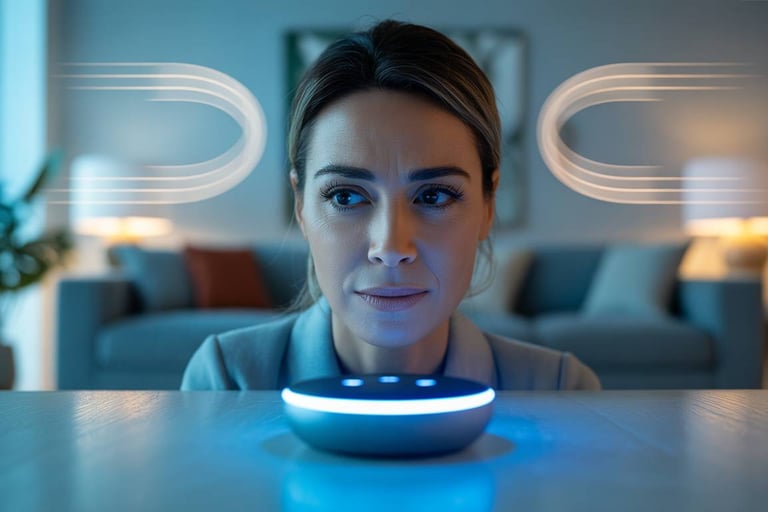Is Voice AI Safe? Understanding Risks and Protections
Is voice AI safe to implement in business? Learn about the associated risks and necessary protections to use it securely for maximum benefits.
Lilo
7/28/20257 min read



The application of Voice AI technologies within a business has increased, especially concerning customer service, smart assistants, and transcription applications. This new form of technology promises to revolutionize industries, but raises the question of whether it is safe to use.
Safety issues concern breaches of data, privacy, ethics, or reliability of AI systems. Organizations that plan to adopt voice AI technologies should take into consideration both the regulatory frameworks and safeguards necessary to mitigate the risks, as well as enable the use of voice AI in a safer manner.
What Is Voice AI?
Voice AI is a result of the combination of different hardware and software systems that have the ability to comprehend human speech. Voice AI utilizes NLP, machine learning, and speech recognition technologies to comprehend and act upon commands.
In a business setting, voice AI can take the form of an automated customer service representative, a meeting summarizing digital assistant, IVR systems, productivity software with speech interfaces, or real-time responding AI agents for calls and verbal queries. While the efficiency gains and productivity improvements are significant, risks still need to be integrated into the framework in a proactive manner.
Core Safety Issues of Voice AI
Integrating voice AIs into a company’s workflow processes without mitigating its risks can lead to actual safety, legal, and financial issues. Organizations must solve a number of critical issues in order to enable the responsible and safe application of voice AI.
One major challenge is the privacy of data. Voice commanding AI systems can process sensitive data such as confidential information, account numbers, addresses, business conversations, and even names. Unless proper measures are taken to segregate this information, it risks exposure.
Some systems retain recorded voices for training and evaluation, which raises control and compliance concerns with GDPR, HIPAA, or CCPA. Another risk is voice spoofing and impersonation. Through deep fake technology, impersonation of individuals is possible, presenting significant threats.
This can be used for system manipulations of voice-recognition technology or employee deception and fraud. When using voice AI in business processes, it is necessary for anti-spoofing security measures to be in place to prevent counterfeiting security breaches.
An intrusion, also labeled unauthorized access, poses a major threat . If voice technologies are improperly secured, proprietary systems and information can be internally exposed. A voice-enabled dashboard for smart offices could be used by unauthorized individuals bypassing enforcement of strict authentication measures.
Devices that are always-on pose privacy threats with microphones capturing information that shouldn’t be processed. Systems with fuzzy command definitions may execute harmful operations based on random phrases, resulting in the exposure of sensitive data.
There is also the increasing concern of operational inefficiencies along with ethical ones, focusing on bias and misinterpretation. The fact that voice AI systems are built on training data puts them at risk of bias when trying to interpret accents and dialects. More so, from marginalized user groups worsens the interactions they already endure.
For businesses like healthcare, legal affairs, or even security, the voice AI presents a huge challenge. To solve such issues, voice AI relies on fallback alternatives that ensure a greater degree of dependability, manual override options, and thorough system fault analysis.
What Makes AI Voice Technology Safe?
Voice AI systems can remain safe if proper countermeasures are installed. Many modern systems consider privacy, security, and ethics during their design phase. Voice AI systems are only safe when a secure data architecture is implemented.
This includes the use of encrypted data transmissions and data at rest, anonymization of voice data when applicable, and granting access through strict role-based, siloed systems to vetted personnel only for classified materials.
Another notable safety procedure is transparent consent mechanisms. Subjects need to be notified when they are being recorded and how exactly their information will be processed. Ethically implementing voice AI involves informing users adequately about the information collected from them and how it will be processed or even shared.
Businesses may employ opt-in voice capture systems that come with clear indicators or signals that can be heard, confirming to users that they are informed about the data being collected.
Liveness Detection
Modern voice AI technologies have incorporated liveness detection to combat deepfakes and voice spoofing. This technology allows for the confirmation of a voice as being real, not recorded or synthesized. Additionally, voice verification can be fortified with multi-factor authentication that adds an extra security layer, such as passwords, photographs, or biometric scans.
The problem of bias from an inclusive training data set can be solved through data collection. The effectiveness of adapting voice AI systems to understand user input increases when devices are trained with diverse sets of samples with different accents, dialects, and speech patterns.
Allows For Adjustment
Voice AI model retraining allows for adjustment to the way real people talk, which enhances reliability and fairness. In voice AI applications, it’s paramount to incorporate human oversight and failure prevention systems for sensitive tasks.
In addition to providing automation for a more efficient workflow, systems should also allow for manual intervention in the event the AI gets into an error loop. Options for real-time oversight and human verification for potential problem misinterpretations or failures that could escalate into serious issues without intervention are paramount.
Compliance and Regulatory Policies of Voice AI
With the adoption of voice AI technologies, new regulations have begun to shape its use. Businesses that adopt voice AI technology are subject to stringent data privacy laws including the General Data Protection Regulation (GDPR) in Europe, the California Consumer Privacy Act (CCPA), and the Health Insurance Portability and Accountability Act (HIPAA) for the healthcare industry.
These compliance regulations mandate organizations to maintain record-based processes on their voice data workflows, including collection, storage, and utilization. Compliance in these cases would also mean that the businesses in question must have defined policies regarding the collection and usage of data.
Moreover, businesses must build voice AI systems compliant with the regulatory policies, designed to ensure adequate privacy and security safeguards, data access, deletion provisions as well as breach notification requirements.
Risk Considerations and Applications in Business
With the right procedures in place, different business functions can utilize opportunities that come with voice AI technology. An example is support call triaging and besides that, customer service AI bots that operate non-stop, providing full service including intelligent query scripting and guidance of inquiries stream.
With this technology in place, necessary safeguards must also be implemented, which include limited use for non-sensitive dialogue, participation in audit and review systems, interaction logging, and sensitive action verification step processes like call-back confirmations.
An example of an automated system is AI voice applications that are tailored for sales, which helps sales agents in logging of calls, summarization of meetings, and even pinpointing sentiment analysis of meetings.
Security is maintained through recording with permission stipulations, automated notification, encrypted storage of the conversations, and limited access for internal review.
Also, internal productivity tools and voice-controlled task management systems that are less frictional need user verification and device encryption to protect proprietary information and secrets belonging to the business.
Comparison of AI Voice and Human Voice: Alerts and Public Engagement
Voice AI systems raise important and immediate ethical concerns, one of which is transparency. Both the interactions and outputs of voice AI technologies should be identifiable to users, and identification is imperative.
A violation of trust, especially in the case of AI systems, is possible without adequate disclosures and labels, which alone justifies ethics arrangements. Consumer protection laws from various jurisdictions also highlighting ethics of arrangements provide additional supporting arguments.
AI Voice technology has made rapid advances in the gendered and style-simulated emulation of human voices, but this cannot negate the traditions of trust full disclosure must always be legally maintained. Full disclosure prevents mistrust and assists adopting ethical AI while averting risk and further brand distancing practices and emergent distrust decaying reputation damage.
The Explained Use and Safety Responsibilities of Agencies Deploying Voice AI
Agencies deploying voice AI, like smarter path, have core responsibilities for the development of safe and effective voice AI systems. They undertake collection of thorough risks and privacy issues, the design of safe infrastructures, and the compliance checks of their vendors within the governing regulations of the particular industry.
In addition, they ensure safekeeping and efficient scaling with voice AI systems through active monitoring, retraining, and optimization.
Voice AI and the Future of Enterprise Interaction
Developments in empathetic recognition, multilingual interactions, and personalized voice features make the future of voice AI in business particularly exciting. However, with every technological advancement, there is always an emerging challenge or risk that needs to be addressed.
For example, voice AI technology demands a strengthened trust framework for automation of acknowledgment, abusive system automation, infractions of ethical automated decision making automation, and misinformation infractions.
Conclusion
It appears that voice AI technologies can be secure. Still, companies must prioritize protecting these technologies from breaches of privacy and irresponsible usage from the very beginning.
Designing for security and privacy, along with proactively mitigating risks, does address issues of data breaches, systemic bias, and even spoofing, but only when these structural frameworks are properly implemented.
Voice AI can confidently be integrated when companies employ rigorous policies around grantable participation, inclusive system training, comprehensive system governance, partitioned data repositories, and tiered access controls.
If voice AI systems are secured with the recommended protective measures, business interactions and operations can be transformed to enhance engagement and drive growth.




Contact us
Whether you have a request, a query, or want to work with us, use the form below to get in touch with our team.


Location
3721 Single Street
Quincy, MA 02169
Hours
I-V 9:00-18:00
VI - VII Closed
Contacts
javier@smarterpath.ai
mariano@smarterpath.ai
+1 (917) 684-3554
Copyright © 2025 SmarterPath. All rights reserved.
